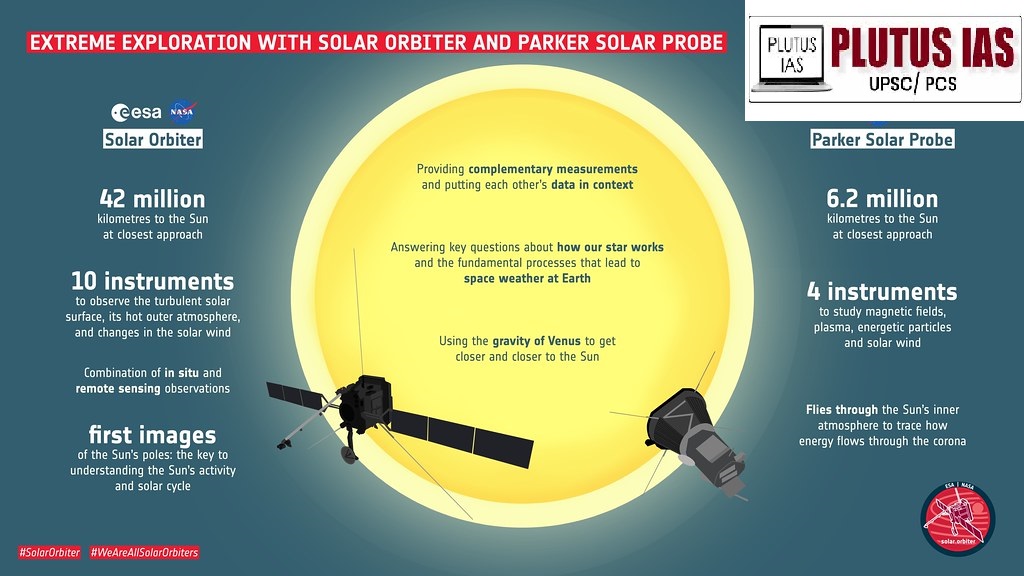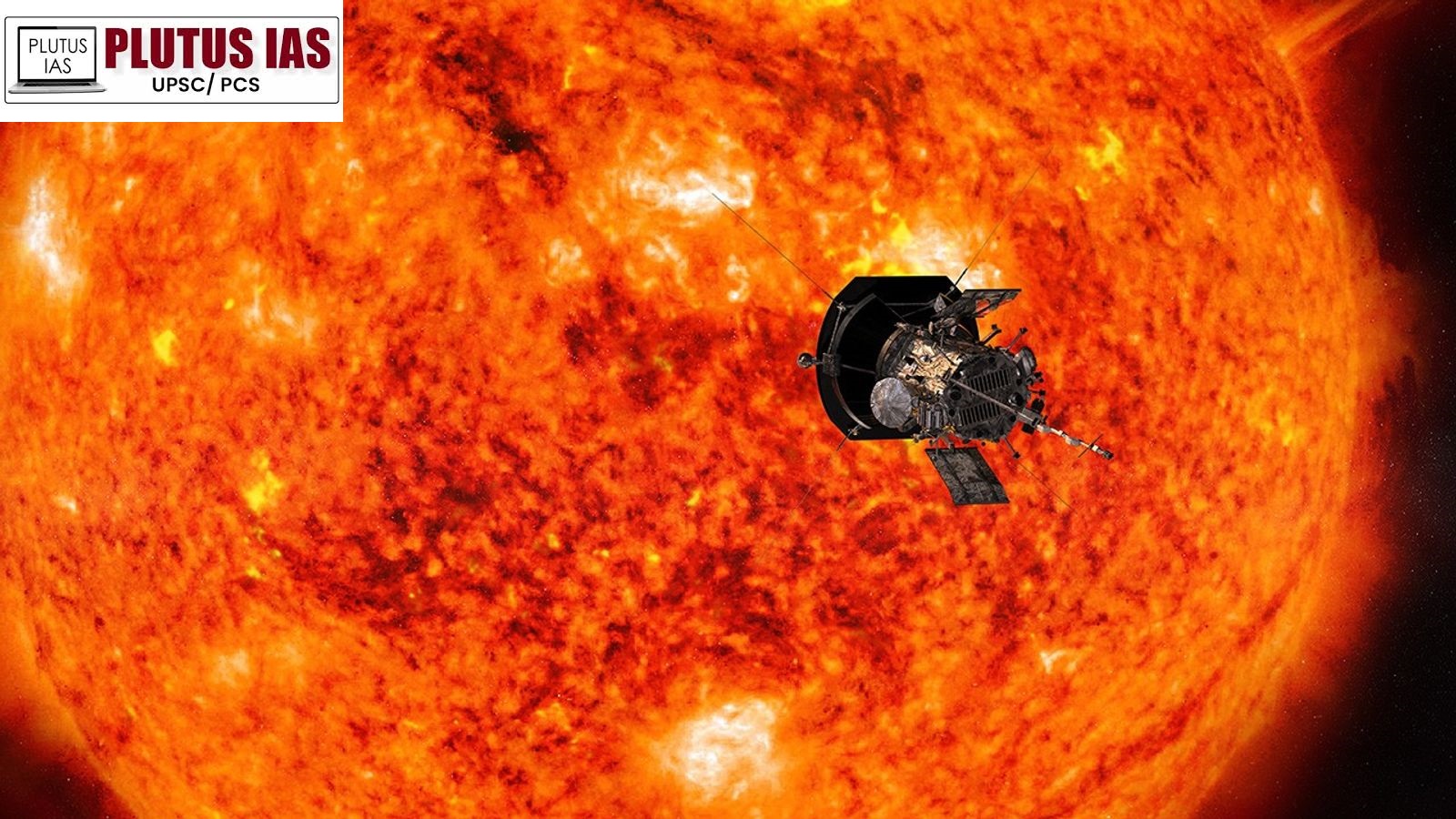What is the Parker Solar Mission (PSM)
The Parker Solar Mission (PSM) is NASA’s groundbreaking attempt to study the sun up close — so close, in fact, that it’s often called the mission to “touch the sun.” Named after physicist Eugene Parker, who first theorized the solar wind, the mission is carried out using the Parker Solar Probe — a sophisticated spacecraft built to withstand the harshest conditions in our solar system. Launched in August 2018 aboard a Delta IV Heavy rocket from Cape Canaveral, the probe aims to fly closer to the sun than any spacecraft in history.
Its primary goal is to explore the sun’s outer atmosphere — the solar corona — and gather crucial data that can solve long-standing mysteries of solar physics. The mission is a marvel of engineering and has already revolutionized our understanding of the sun.
Factual Details About the PSM
1. Launch Date and Location: The Parker Solar Probe was launched on August 12, 2018, from Cape Canaveral Air Force Station in Florida aboard a Delta IV Heavy rocket.
2. Mission Speed: Once in space, the spacecraft reached a record-breaking speed of 692,000 km/h, making it the fastest human-made object in history.
3. Distance from the Sun: On December 24, 2024, it came within 6.1 million km of the Sun’s surface. By March 22, 2025, it made another attempt to get even closer, aiming for around 6 million km.
4. Flight Path and Gravity Assist: The spacecraft uses gravity assists from Venus and Earth to gradually spiral closer to the Sun. The original Jupiter flyby idea was dropped due to distance concerns.
5. Thermal Protection: The probe is equipped with an 8-foot-wide, 4.5-inch-thick carbon-carbon composite heat shield, capable of withstanding temperatures up to 1,370°C, while keeping the internal instruments at a safe 29°C.
6. Structure and Materials: The heat shield includes a carbon composite foam core and is coated with white ceramic paint to reflect solar radiation. A separate Faraday cup made from a molybdenum alloy operates outside the shield and endures extreme heat to study the solar wind.
7. Instruments Onboard: FIELDS (Focusing Optics X-ray Solar Imager): Measures electric and magnetic fields in the Sun’s corona. This helps scientists understand how energy and heat move through the solar atmosphere and drive solar eruptions.
ISʘIS (Integrated Science Investigation of the Sun): Detects energetic particles that form solar storms.
It provides insights into the acceleration and transport of these particles across the solar system.
WISPR (Wide-Field Imager for Solar Probe): Captures images of solar phenomena like coronal mass ejections and the solar wind. It offers the first-ever direct views of the Sun’s outer atmosphere and helps track solar material as it moves outward.
SWEAP (Solar Wind Electrons Alphas and Protons): Records solar wind properties such as speed, density, and temperature. This data is crucial to understanding how the solar wind is heated and accelerated.
Faraday Cup: Measures ion and electron density directly in the solar wind. It operates by collecting charged particles and analyzing their properties to map the solar wind’s structure.
Duration and Orbits: Over the course of its mission, the probe will complete 24 orbits of the Sun and spend more than 2,000 hours flying through the corona.
8. Important Discoveries:
Discovery of dust-free zones near the Sun, defying previous assumptions.
Observation of magnetic switchbacks in the solar wind : sudden reversals in magnetic field direction.
Data supporting the theory that Alfvén waves contribute to the unusually high temperature of the solar corona.

Significance of the Parker Solar Mission
The Parker Solar Mission (PSM) is more than just a technological feat : it’s a window into the secrets of our closest star. Its significance lies in:
1.Understanding Solar Storms: Parker helps identify the causes, composition, and structure of solar storms, which can severely affect satellites, electric grids, aviation communication, and GPS systems on Earth.
2. Probing the Solar Wind: The mission provides the first-ever direct evidence of phenomena like magnetic switchbacks and Alfvén waves, which could explain why the corona is mysteriously hotter than the sun’s surface.
3. Studying Coronal Mass Ejections (CMEs): Parker Solar Probe has advanced our understanding of CMEs : massive eruptions of plasma and magnetic field from the sun’s corona that can carry billions of tons of solar material into space. These CMEs can collide with Earth’s magnetosphere, disrupting satellite systems, communications, GPS, and power grids. Understanding their origin and evolution is key to building better early-warning systems for geomagnetic storms.
4. Space Weather Prediction: Data from PSM enhances our ability to forecast space weather events, which is vital for astronaut safety, protection of electronic infrastructure, and ensuring uninterrupted satellite operations.
5. Dust-Free Zones Near the Sun: Parker discovered regions near the sun that are unexpectedly devoid of interplanetary dust, revising previous assumptions about the solar system’s inner environment and its evolution.
6. Historic Alfvén Surface Crossing: Perhaps most thrilling is the April 2021 event when the probe crossed the Alfvén surface, officially entering the sun’s atmosphere : a historic first in solar exploration.
7. Extreme Engineering Marvel: The mission showcases cutting-edge thermal protection systems, including a carbon-carbon heat shield capable of withstanding 1,370°C, and innovative cooling mechanisms that maintain instrument function just meters away from the sun’s intense radiation.
8. Decoding the Sun’s Magnetic Field: Parker’s measurements of the sun’s electric and magnetic fields provide key insights into the star’s complex magnetic topology, helping to understand solar cycles and sunspot activity.
9. Long-Duration Corona Exposure:The probe is set to spend over 2,000 hours flying through the sun’s corona, enabling unprecedented long-term observations of high-energy particles and plasma behaviors.
10. International Collaboration and Inspiration:The mission serves as a global example of scientific ambition and engineering excellence, inspiring similar missions like ISRO’s Aditya-L1 to probe solar mysteries from different vantage points.
Conclusion
The Parker Solar Mission represents humanity’s boldest step yet towards unraveling the mysteries of our star. By flying into the sun’s corona and directly sampling its environment, the Parker Solar Probe has opened new frontiers in astrophysics and space science. Its discoveries not only deepen our understanding of the sun’s behavior but also pave the way for better protection of Earth’s technological infrastructure. As the probe continues its journey with upcoming flybys — like the one on March 22, 2025, and again in June — the world waits eagerly for the insights it will bring from our blazing celestial neighbor.
Prelims Questions






No Comments